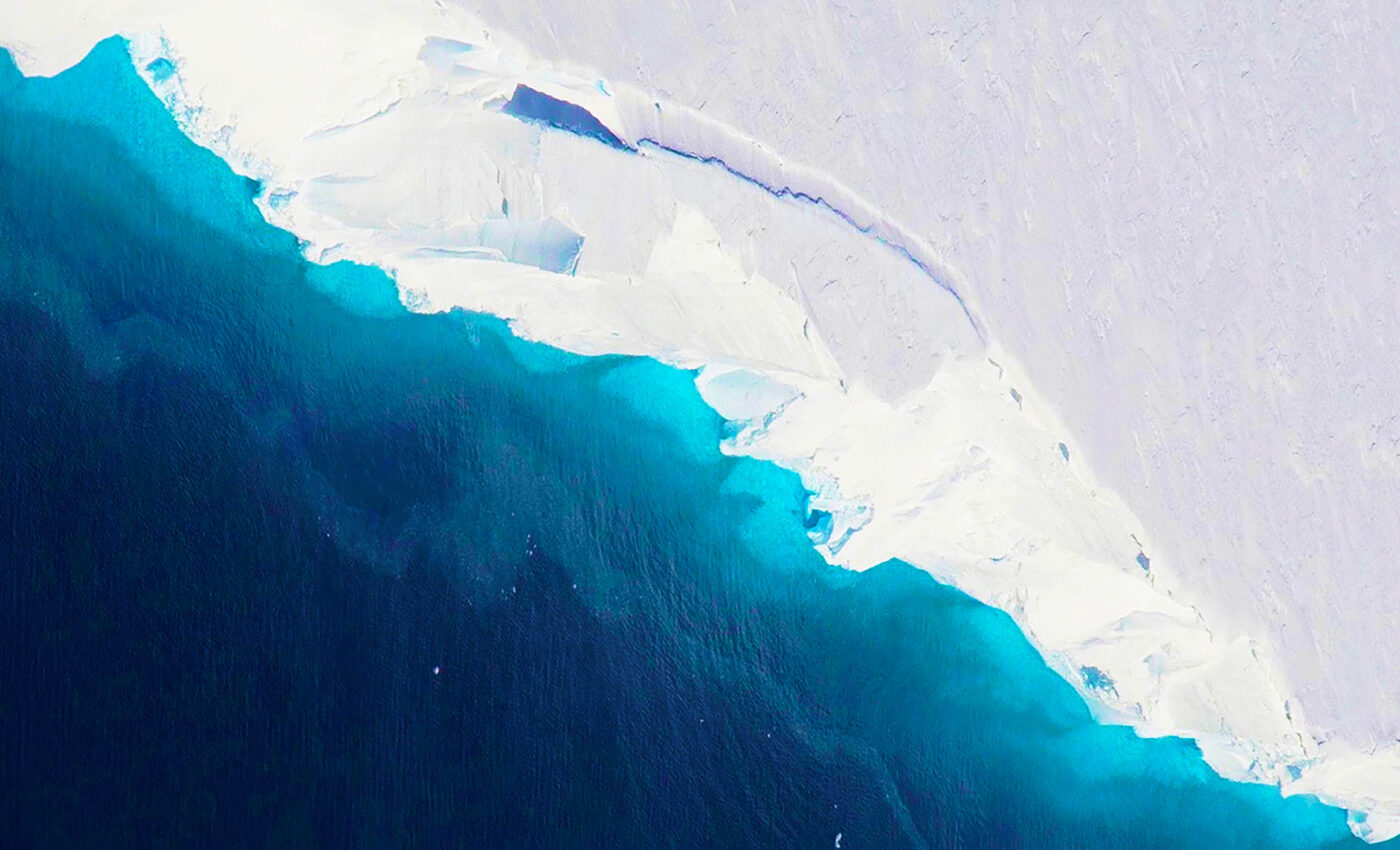
Doomsday Glacier is relentlessly melting away due to warm water
Antarctica, the vast, icy continent at the bottom of our world, holds a chilling secret that could drastically reshape our coastlines within the next few decades. Scientists have just unveiled alarming new evidence: warm seawater is relentlessly melting away at the underbelly of the Thwaites Glacier, a massive ice formation ominously nicknamed the “Doomsday Glacier.”
Why the “Doomsday” nickname?
Thwaites Glacier, often called the Doomsday Glacier, is a colossal ice sheet in Antarctica. It spans 74.56 miles (120 kilometers) in width and plunges 0.75 miles (1.2 kilometers) in depth.
The sheer volume of ice it holds is staggering, with the potential to raise global sea levels by 23.62 inches (60 centimeters) if it were to melt completely.
This is a significant threat. We’ve already seen notable social and economic impacts from just a few centimeters of sea-level rise.
For instance, coastal erosion, increased flooding, and saltwater intrusion into freshwater sources have already posed challenges to communities worldwide.
The potential rise of seawater could lead to widespread devastation, particularly in low-lying areas. Coastal cities, small island nations, and vulnerable ecosystems would face severe impacts.
This underscores the urgent need to understand and mitigate the effects of Thwaites Glacier’s melting.
Doomsday glacier melt from warm water
For the first time, researchers have witnessed the insidious process of warm seawater intrusion beneath Thwaites Glacier. This discovery was made possible by the keen eyes of the ICEYE satellite.
This isn’t just a gentle lapping at the edges; it’s a forceful pumping that lifts and drops the glacier in a continuous cycle. Each time the ice touches the intruding seawater, intense melting occurs.
The glacier sits in a basin, and right now, the seawater is only reaching the edges. But scientists predict that within the next 10 to 20 years, this destructive dance will reach the deeper parts of the basin. That’s when things could get truly catastrophic, with melting rates accelerating at an alarming pace.
Underestimating the Doomsday Glacier urgency
“Thwaites is the most unstable place in the Antarctic. The worry is that we are underestimating the speed that the glacier is changing, which would be devastating for coastal communities around the world,” warns Dr. Christine Dow, a professor at the University of Waterloo and a co-author of the study.
If sea levels rise by half a meter or more, cities like Vancouver, Miami, and countless others would face severe flooding. Infrastructure would be damaged or destroyed, displacing millions of residents.
Entire low-lying countries like Bangladesh, where vast areas are already at or below sea level, would struggle to cope with the encroaching waters.
Pacific islands such as Tuvalu and the Marshall Islands would be particularly hard-hit. Rising sea levels could submerge entire communities, leading to mass migrations and loss of habitable land.
The social upheaval will be immense as communities relocate, creating climate refugees and straining resources in less affected regions.
Economically, the impact of Doomsday Glacier melt would be devastating. Critical infrastructure, including ports, airports, and transportation networks, would be compromised.
Agricultural lands would be lost to saltwater intrusion, affecting food supply chains. The cost of rebuilding and adapting to these changes would be astronomical, burdening both local economies and international aid systems.
Improving the models
To understand just how dire this situation is, scientists like Dr. Dow are working tirelessly to refine their models of glacier melt.
They’re accounting for the complex interactions of seawater flowing in, subglacial water flowing out, and the mixing of the two.
Their goal is to create more accurate predictions of how fast Thwaites is melting and how much time we have left to act.
“At the moment, we don’t have enough information to say one way or the other how much time there is before the ocean water intrusion is irreversible,” admits Dr. Dow.
But through rigorous research, they hope to narrow down sea level rise estimates to decades rather than centuries.
“Climbing Everest in tennis shoes”
The urgency of this research is clear, but the resources to support it are lagging.
“We operate at the same budget in 2024 in real dollars that we were in the 1990s. We need to grow the community of glaciologists and physical oceanographers to address these observation issues sooner rather than later, but right now we’re still climbing Mount Everest in tennis shoes,” notes Dr. Eric Rignot, the lead author from UC Irvine.
In other words, the scientific community is ready and eager to tackle this challenge, but they need the funding to do so effectively.
Our future, our responsibility
The melting of Doomsday Glacier is a stark reminder that climate change is not a distant threat. It’s happening now, with the potential to cause immense suffering within our lifetimes.
The focus should remain on reducing carbon emissions to avert the worst-case scenarios. Understanding the processes unfolding beneath Thwaites is crucial for adapting to the inevitable changes in our oceans.
The Doomsday Glacier is a ticking time bomb, but with continued research and swift action, we might just be able to defuse it before it’s too late. Our future, and the future of our coastlines, depends on it.
The study is published in the journal Proceedings of the National Academy of Sciences.
—–
Like what you read? Subscribe to our newsletter for engaging articles, exclusive content, and the latest updates.
Check us out on EarthSnap, a free app brought to you by Eric Ralls and Earth.com.
—–













